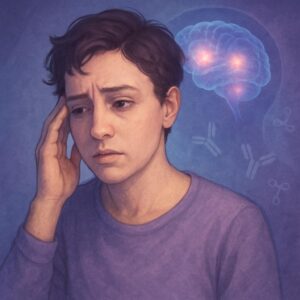Autoimmune Encephalitis is a serious but treatable condition in which the body’s immune system mistakenly attacks the brain, causing inflammation. This can lead to confusion, memory loss, seizures, personality changes, and even psychosis. It can come on suddenly and often mimics psychiatric or viral illnesses at first.
AE can occur on its own or be triggered by infections, cancer (paraneoplastic), or unknown causes. The condition varies based on the autoantibody involved, with anti-NMDA receptor encephalitis being one of the most well-known forms.

